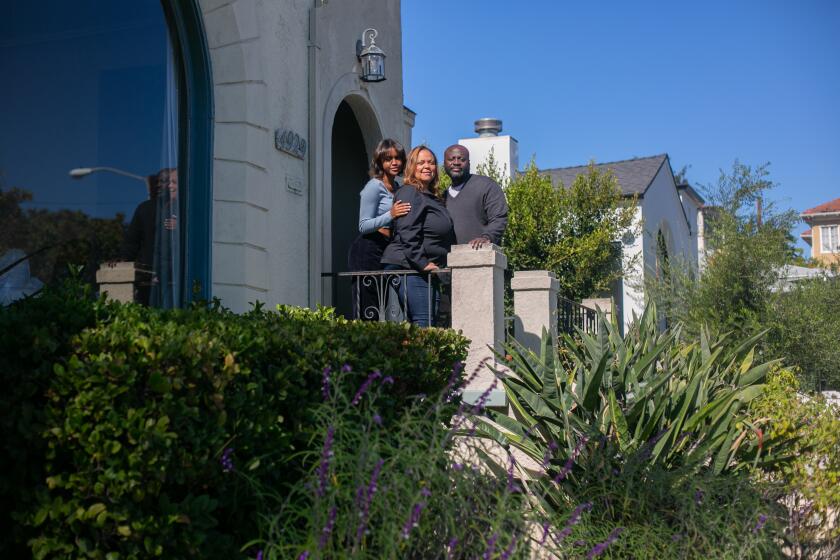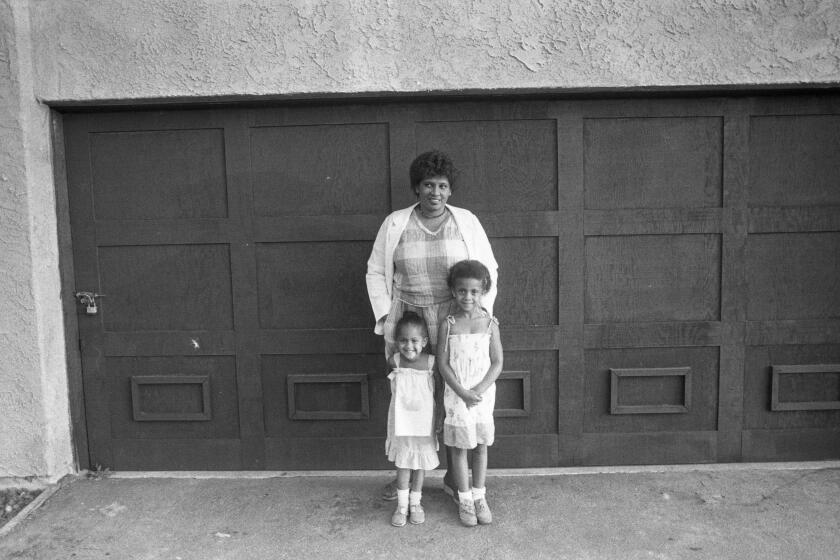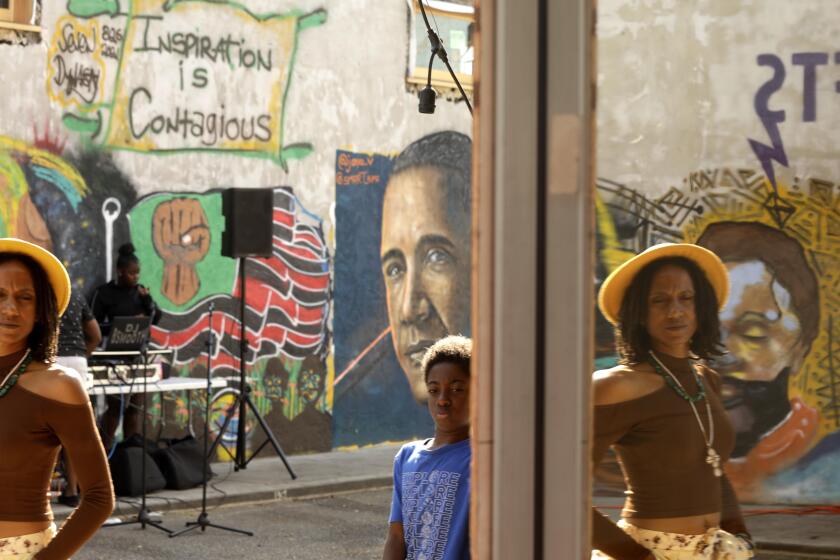Column: Who is buying those expensive houses in South L.A.? Is it really just white people?
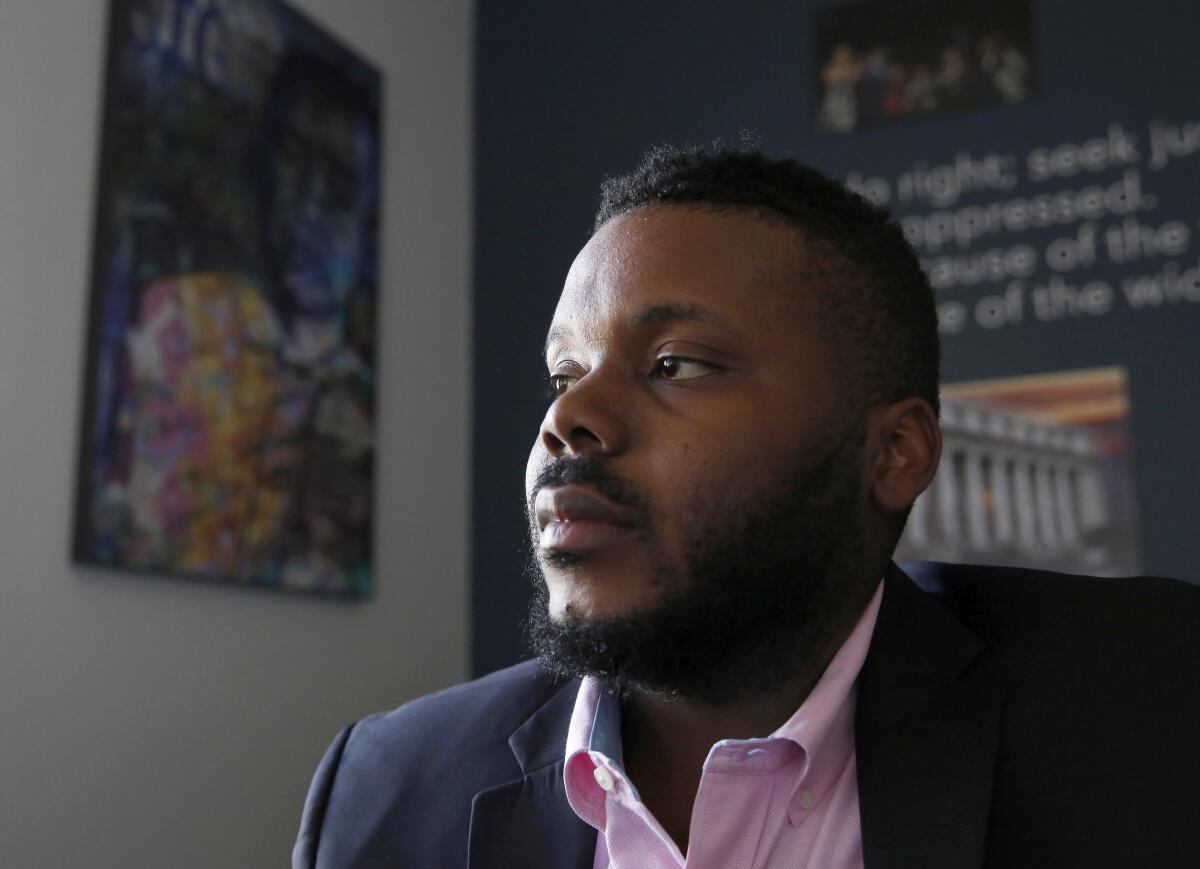
- Share via
Michael Tubbs spent years making a name for himself as the first Black mayor of Stockton, pioneering a guaranteed income program and turning it into a model for other cities and, one day, hopefully, the entire nation.
It was quite the run. But after losing a bid for reelection last year, Tubbs and his wife, Anna, started thinking about their next chapter.
They knew they wanted one thing above all else — to live in a strong Black community. And so they did what a growing number of Black families can’t do as the cost of housing continues to climb in South L.A. — they bought a house in the historically Black neighborhood of Hyde Park.
“It just made sense,” Tubbs told me one recent morning. “We know there’s a chance our kids will be educated in a predominantly white setting. So we thought that, we don’t want their experience to always be ‘the only’ or ‘one of the few.’ We want them to see themselves reflected in others around them.”
But, he admitted, with houses now going for $1 million, “even moving to Hyde Park for us was a bit of a stretch.”
It’s a crazy thing to consider: Redlining and restrictive covenants created the Black neighborhoods of South L.A., and now most Black people can’t afford to buy — or even rent — there.
With home prices topping $1 million, Black people who bought modest properties decades ago are realizing they are wealthy. All they have to do is keep them.
Go to any open house in South L.A. and Black homebuyers are few and far between.
And yet, it was only a generation ago that Black parents were dragging their kids from South L.A. to the San Fernando Valley for a better life, as my colleague Sandy Banks recounted in a recent column. Never mind that for decades, those neighborhoods were notoriously whites-only.
Get the latest from Erika D. Smith
Commentary on people, politics and the quest for a more equitable California.
You may occasionally receive promotional content from the Los Angeles Times.
I grew up in Ohio, but I also got dragged from a majority Black suburb to a majority white suburb for a better life. Everything is a cycle, I suppose.
So now, with the changes in demographics driven by gentrification, all anyone wants to talk about is the influx of white neighbors and the risk of losing South L.A. as a mecca of Black culture.
I recently had such a conversation with Stacy Lewis, head of the Leimert Park Neighborhood Assn. I asked if he knew of many Black families other than his that had bought homes south of the 10 Freeway lately. He just stared at me in confusion and shook his head.
“No, just white people,” he said flatly.
As if on cue, a white woman in yoga pants strolled by our table outside Harun Coffee.
But, as it turns out, there are some Black people who can and, more importantly, are willing to fork over the eye-popping down payments and accept the exorbitant mortgages that have become the norm of homebuying in South L.A.
Exactly how many families is unclear. But they exist.
Many have made their money in the tech and entertainment industries. There are the Issa Raes and Tiffany Haddishs, of course, but also showrunners and writers and executives with names few would recognize.
Times columnist Sandy Banks recalls her time working on the “Black L.A.: Looking at Diversity” series in 1982.
In the last few years, Pam Lumpkin, an agent with Compass Real Estate, said she has sold a number of homes in South L.A. to Black professionals, both single adults and young couples looking to raise families.
Lumpkin said many seek her out specifically because, while they could live in, say, Hollywood or Studio City, they want to live in a Black neighborhood.
“I feel like there’s some sort of awakening in my community,” she told me, “not just my neighborhood community, but my African American community. We want to get back what we had before. We don’t want to lose that.”
Some have told her they were changed by last year’s racial reckoning and watching George Floyd get murdered by Minneapolis police. Others say they are simply exhausted from the years of blatant, in-your-face racism under the Trump administration.
“Our kids go into these schools where nobody looks like them. Teachers, administrators, all of that,” said Lumpkin, who lives in View Park. “The feeling of security in the neighborhood is nice. Like, you just feel secure when you see other people that look like you.”
This is a good thing for those interested in preserving the Blackness of South L.A. Because the future of these neighborhoods will come down to two things. First, whether a majority of longtime Black residents choose to keep their homes, rather than sell them to house flippers or developers. And second, whether Black families who can afford to live anywhere choose to buy homes in South L.A.
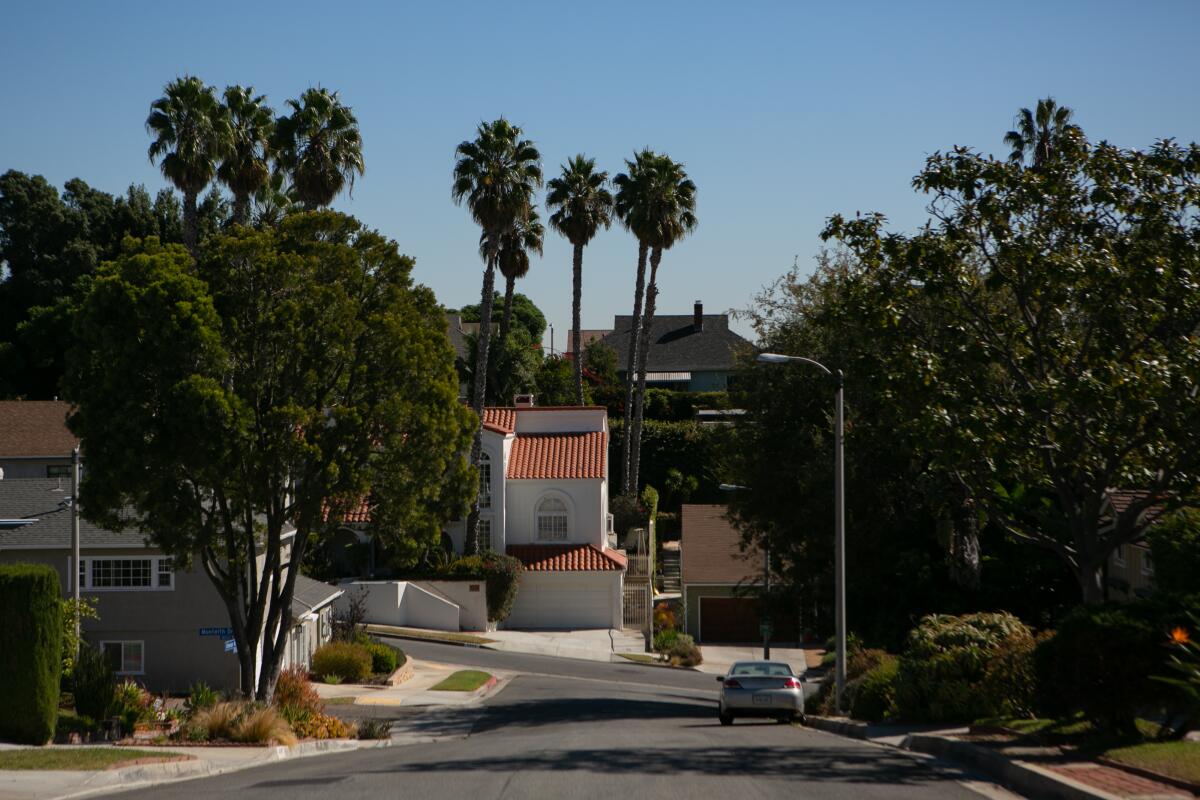
And, if they do buy in South L.A., whether they will act like gentrifiers or like community stakeholders. It’s the difference between the economic gentrification that now seems inevitable and the cultural gentrification that is not.
Tubbs and his wife wrestled with those questions. The former mayor said he went as far as to ask local Black elected officials whether his family would be seen as gentrifiers and whether that would undermine their efforts to curb displacement.
“They said it’s important that folks come in with a sense of ownership,” he said, noting he is already involved with several local grassroots initiatives. “So it’s buying property and owning land. I think they also appreciated that it’s me and my wife, and we look like the community.”
Michael and Clarissa Brooks, who recently bought a house in Ladera Heights after living in the Bay Area, still worry about being gentrifiers. Then again, they both grew up in Brooklyn, back when Brooklyn was Brooklyn.
“The unfortunate part about all of this is that I know that it’s not attainable for all of us,” said Clarissa, who works in private practice as an attorney. “And that part was hard to reconcile, to be honest, because it’s nice to walk into a place where you don’t have to feel different.”
Sky-high housing prices, two new zoning laws and the sale of Baldwin Hills Crenshaw Plaza could be a tipping point for historically Black neighborhoods.
Michael, who works in product management at Snapchat, agreed with his wife, adding that the mostly Black neighborhood feels like “a warm blanket,” the way Brooklyn used to feel.
“No one is crossing the street, no one’s clutching their purse, no one is closing the door behind them before I can get up to it,” he said. “No one is doing that.”
That’s why, despite all the angst over gentrification, Lumpkin is confident that more Black families who can afford to buy homes in South L.A. will eventually do so.
“Why take your money and go buy where you need to worry about who your next-door neighbor is, worrying if they’re going to act right or not?” she asked. “Bring your money here and invest it here and let’s build our community.”
More to Read
Get the latest from Erika D. Smith
Commentary on people, politics and the quest for a more equitable California.
You may occasionally receive promotional content from the Los Angeles Times.
